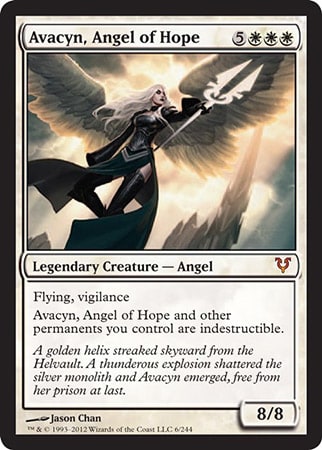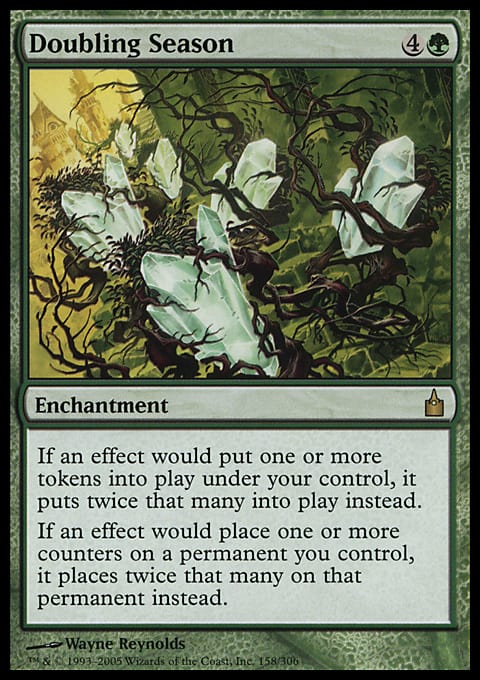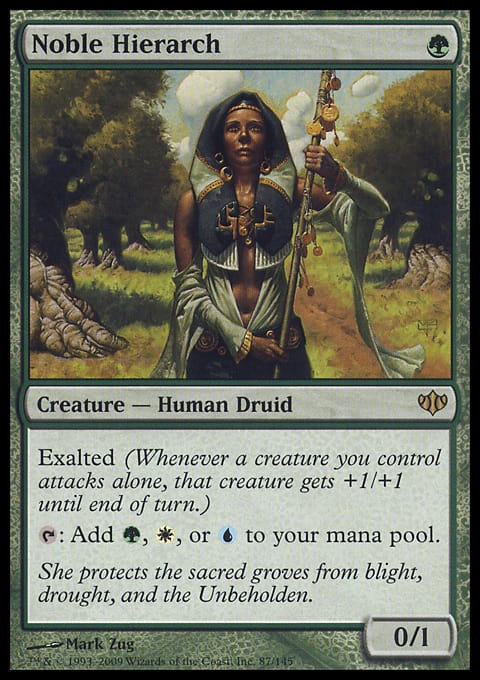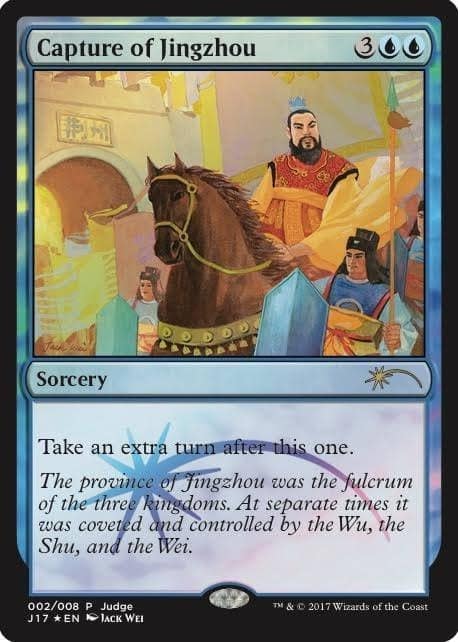After last week’s article, I started thinking of other ways you can uniform the processes involved with the financial side of Magic. After talking more with my roommate, we listed a number of effects that seem to have a repetitive theme when it comes to value. Competitive cards are typically easy to identify when a set releases—this is not to say there are not surprises, but overall, you can dismiss the majority of cards quickly. Casual cards, on the other hand, seem much more difficult for most people to spot. This week, I am going to talk about some of the identifiers I use when looking for cheap cards for which I expect growth over time.
The first and most obvious—to most people—is creature type. Everyone has that friend or someone at his or her shop who collects Dragons or Angels. Perhaps Elves are more your style, but no matter how you look at it, a number of cards are more widely accepted to be worth money just because of that subtype. When a set first comes out, I will take note of the mythics especially, looking for those key types to note for long-term gain. Some cards, such as Archangel of Thune and Baneslayer Angel, are identified quickly for their potential playability, but others, such as Avacyn, Angel of Hope, have little chance to see competitive play. Over time, these cards will only grow, and when rotation comes, they also seem to have the relatively stable prices with little to no price change. In order, these are the top ten tribes to watch for:
- Angel
- Dragon
- Sliver
- Squirrel
- Elf
- Zombie
- Goblin
- Vampire
- Demon
- Merfolk
Honorable mention goes to the Eldrazi, which couldn’t quite make the list due to how new they are in comparison. Very few cards that contain any of these creature types—or even mention of the types—tend to be worth money. If you don’t believe me, just look to a card such as Crucible of Fire, which has sustained value through the years. The Warchief cycle in Scourge is another great example of why tribal is probably the most popular part of Magic for many players, and this list goes on and on. Just understand, when you are picking bulk next time, that these guys may require a second look.
Repetitive life-gain is an ability many competitive players have dismissed outside of a select number of cards through the years. Sure, we all know Martyr of Sands is playable and Firemane Angel used to drive Solar Flare decks over the top, but few people understand why Sanguine Bond and Wellwisher are worth anything. Beyond a number of combos, these cards keep players alive, and more than anything, most casual players just want to play long games of Magic in which they are able to play large, flashy guys who do cool things—and the easiest way to stay alive is to pad your starting total. Anything that has potential to gain a variable amount of life over the course of a game is probably a pick even if you believe it to be completely unplayable. A number of cards that saw play during their respective times in Standard have held long-term value based on this life-gain theme; examples include Wall of Reverence and Spike Feeder.
Token-producers are a type of card most people have learned to look out for since Doubling Season spiked well over $30 at one point. Not all token-producers are worth money, but picking them all is a fairly safe bet considering there are far more hits than misses. It also helps if the tokens the card produces is a commonly-found type, such as Saprolings and Zombies. People love their tribal, and that carries over into the token-producers.
On the subject of token-producers and Doubling Season, you will sometimes see such obvious picks as Parallel Lives in a spoiler, and though you would think people would have caught on by now, it seems the market still takes time to adjust. Getting in on these types of cards early can quickly turn a profit, as it no longer takes two to three years for a card to spike.
There are a ton of effects throughout Magic that warrant value, but as I have limited space and we are talking a novel, I will discuss some of the more common effects. Milling has been popular since the beginning years of Magic, and very little has changed, as you still see people trying to race to sixty rather than 20. Any card that is cost-effective for milling typically ends up being worth money. The newest example, Breaking // Entering, has taken a while to catch on, but given how expensive its predecessors have become, it only seems a matter of time before these catch on as well. Glimpse the Unthinkable is the primary staple for these strategies and commands a hefty $20-or-more dollar price tag, which is unlikely to change until Wizards finally reprints it down the line. Even cards like Jace's Erasure and Mind Sculpt end up being picks short term, only gaining value over time.
Exalted is another mechanic that has now reared its head twice and both times left behind a number of cards that have retained or gained value over time. The more recent printing hasn’t had enough time to truly scale appropriately, but expect cards like Duty-Bound Dead to become regular picks down the road. Of course, Noble Hierarch fits into this category as one of the few that has seen real Constructed play, but even those that haven’t seen the red zone seem to be creeping up in price.
The next group of cards is harder to nail down in terms of an actual mechanic, but multi-target or world effects, such as the recently-printed Primordials, have nowhere to go but up over time. As more and more players, not just casual, flock to games of Commander, it seems these types of cards will only gain in popularity. This can be extended to a number of other cards, such as Warp World, that, though not worth much, are easy to trade out. It is important to note the cards in each set that can have a global impact upon a game rather than singling out a particular person.
The last set of cards I want to cover this week—though this list is hardly complete—are Time Walk effects. Almost any card that allows you even a chance to take an extra turn instantly become worth money, even if said card is overvalued at first; see Temporal Mastery for example. Some of these effects, even those that have significant mana investments, can hold and retain long-term value just because of how few effects there are in the game that allow you to cheat the turn-order system. Hard-to-find versions of this effect can hold a ton of value, such as the Portal Three Kingdoms card Capture of Jingzhou, which can see upward of $200 for near-mint copies. This card alone is proof of exactly how popular extra turns in Magic are, and that keeps my eye on any new card that is released with this ability, no matter how restrictive the cost may seem.
Not every Time Walk comes in sorcery form either—there are a number of cards I have always thought should be worth more and some that have already risen. An example of a permanent that allows you to bend the rules of the game is Lighthouse Chronologist. This card will continue to rise until it sees an eventual reprint, but just over the past few years, this card has risen from bulk to nearly $10. One that I have always felt was underpriced is Time Stop; this card has all sorts of applications, from merely skipping your opponent’s turn to preventing his or her Emrakul, the Aeons Torn from resolving when that sort of tomfoolery was legal. This card is a blue Commander staple that barely holds better than bulk. This baffles me, but beyond a few select instances such as this, most Time Walk effects tend to have reasonably high price tags attached.
As always, if you have any questions or comments, please leave them below or contact me on Twitter. I am curious to see what themes you guys have noticed tend to hold value; this list is but a start of what is out there, and some may even have slipped my radar, as I don’t always have my finger on the pulse of kitchen-table Magic. Thank you for reading, and let me know if anyone has any ideas for a future article. I has been a while since I have written a reader-requested article, and since I am doing this for you, it seems best for you to pick the topics at times.
Ryan Bushard



























